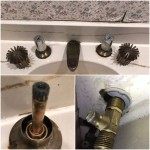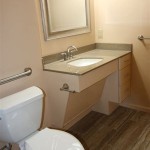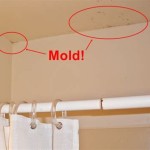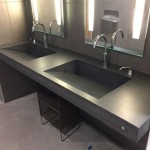How To Vent A Bathroom Without Outside Accessories
Proper bathroom ventilation is crucial for maintaining a healthy and comfortable living environment. It helps remove excess moisture, preventing mold and mildew growth, reducing odors, and improving air quality. While the most common method involves venting directly to the outdoors through a dedicated duct and vent cover, alternative approaches exist for situations where exterior venting is impractical or impossible. This article explores methods for venting a bathroom without relying on traditional outdoor accessories.
The primary issue addressed by bathroom ventilation is moisture control. Showers, baths, and even daily hygiene routines release significant amounts of water vapor into the air. This moisture can condense on surfaces, leading to the growth of mold and mildew, which can trigger allergies, respiratory problems, and structural damage. Furthermore, trapped moisture can create a musty odor and contribute to a generally unpleasant bathroom environment.
Traditional bathroom ventilation systems utilize a fan to draw moist air out of the room and expel it directly outside through a duct. This duct typically runs through the wall or ceiling and terminates at an exterior vent cover. However, certain building layouts, apartment complexes, or historical preservation restrictions may make this type of installation difficult or prohibited. In such cases, alternative ventilation strategies are necessary to manage moisture effectively.
Utilizing Existing Ductwork
One potential solution involves leveraging existing ductwork within the building. If the bathroom is located near an existing HVAC (Heating, Ventilation, and Air Conditioning) system duct, it may be possible to connect the bathroom exhaust fan to this duct. This approach requires careful consideration and professional assessment to ensure that the existing ductwork is appropriately sized and configured to handle the additional airflow from the bathroom. Overloading the system can reduce its overall efficiency and potentially damage components. Furthermore, it is crucial to verify that connecting to existing ductwork complies with local building codes and regulations.
Before connecting to existing ductwork, the following factors must be evaluated. First, the size and capacity of the existing ductwork must be assessed. The ductwork should be able to accommodate the airflow from the bathroom exhaust fan without significantly impacting the performance of the HVAC system. Second, the compatibility of the materials must be considered. Using incompatible materials can lead to corrosion, air leaks, and reduced efficiency. Third, the direction of airflow must be checked. The bathroom exhaust fan should be positioned to draw air in the same direction as the primary airflow within the ductwork. Fourth, the presence of backdraft dampers should be confirmed. Backdraft dampers prevent the backflow of air into the bathroom when the exhaust fan is not operating. Failure to address these factors can result in inadequate ventilation and potential problems with the HVAC system.
Professional HVAC technicians can perform a thorough assessment of the existing ductwork and provide recommendations on the feasibility and implementation of this solution. They can also ensure that the connection is properly sealed and insulated to prevent air leaks and maintain energy efficiency.
Using Air Purifiers with Moisture Absorption Capabilities
While not a direct replacement for traditional ventilation, air purifiers equipped with dehumidifying or moisture-absorbing capabilities can help mitigate the effects of excess moisture in the bathroom. These devices typically employ filters designed to capture airborne particles, including mold spores and allergens, while also reducing humidity levels through processes like adsorption or condensation. The effectiveness of this method depends on the size and capabilities of the air purifier, as well as the size and humidity levels of the bathroom.
Air purifiers that incorporate HEPA (High-Efficiency Particulate Air) filters are particularly effective at removing mold spores and other airborne contaminants that can thrive in humid environments. Additionally, some air purifiers feature activated carbon filters, which can help neutralize odors and improve air quality. When selecting an air purifier for bathroom use, it is important to choose a model that is specifically designed for humid environments and has a sufficient Clean Air Delivery Rate (CADR) to effectively filter the air in the room. Regular maintenance, including filter replacement, is essential to maintain the purifier's performance.
The use of moisture-absorbing materials, such as silica gel packets or dehumidifying crystals, can supplement the air purifier's efforts. These materials absorb moisture from the air, helping to reduce humidity levels and prevent condensation. They are particularly useful in smaller bathrooms or areas prone to excessive moisture buildup. Periodic replacement or regeneration of these materials is necessary to maintain their effectiveness.
It's vital to understand that air purifiers with moisture absorption capabilities primarily address the symptoms of poor ventilation rather than the root cause. They can help improve air quality and reduce humidity levels, but they do not remove the source of the moisture, which is typically the shower or bath. Therefore, it is essential to combine this approach with other strategies, such as improving airflow and reducing moisture production.
Improving Natural Ventilation and Airflow
Even without dedicated ventilation systems, improving natural airflow within the bathroom can significantly reduce moisture buildup. This can be achieved through several techniques, including opening windows and doors (when feasible), using strategically placed fans, and ensuring adequate air circulation from adjacent rooms.
Opening windows after showering or bathing allows moisture to escape the bathroom and disperse into the surrounding environment. This is a simple and effective way to ventilate the room, provided that the outdoor conditions are favorable. However, it is important to consider privacy and security when opening windows, especially in ground-floor bathrooms. Additionally, opening windows may not be practical during cold or inclement weather.
The use of strategically placed fans can enhance airflow even when windows are not open. A small oscillating fan positioned near the shower or bath can help circulate air and prevent moisture from accumulating on surfaces. Additionally, running the central air conditioning or heating system can help improve overall airflow throughout the house, including the bathroom. Ensure the bathroom door is ajar to allow air to circulate freely.
The effectiveness of natural ventilation depends on several factors, including the size of the bathroom, the amount of moisture produced, and the prevailing weather conditions. In smaller bathrooms, even a small amount of airflow can make a significant difference. However, in larger bathrooms or during periods of high humidity, additional ventilation methods may be necessary.
It is also important to consider the design of the bathroom when optimizing natural ventilation. Features such as high ceilings and skylights can promote airflow and reduce moisture buildup. Additionally, ensuring adequate clearance around fixtures and furniture can prevent air from becoming trapped and stagnant.
Beyond these approaches, ensuring the bathroom is thoroughly cleaned and dried regularly can help prevent moisture-related problems. Wiping down shower walls, mirrors, and other surfaces after use can remove excess water and prevent the growth of mold and mildew. Using absorbent towels and bath mats can also help reduce moisture levels in the bathroom.
Addressing minor plumbing leaks promptly can prevent water from accumulating and contributing to moisture problems. Regularly checking faucets, pipes, and drains for leaks and repairing them as needed can help maintain a dry and healthy bathroom environment.
While traditional outdoor venting remains the most effective solution for bathroom ventilation, these alternative methods can provide viable options in situations where exterior access is limited. By understanding the principles of moisture control and implementing a combination of these strategies, it is possible to maintain a healthy and comfortable bathroom environment without relying on conventional venting systems.
Ultimately, the best approach to bathroom ventilation depends on the specific circumstances of each situation. Careful evaluation of the building layout, local building codes, and individual needs is essential to determine the most effective and appropriate solution.

How Do You Air Out A Bathroom Without Window Victoriaplum Com

Your Complete Guide To Bathroom Ventilation Victoriaplum Com

Bathroom Ventilation

How To Brighten Up A Bathroom Without Windows By Mira Showers

What Extractor Fan Do I Need For My Bathroom Blog World

Ventilation Basis Of Design

How Does A Bathroom Extractor Fan Work Victoriaplum Com

What Parts Do I Need To Install An Inline Fan In My Bathroom

Best Ways To Keep Your Bathroom Cool In The Summer

Stop Making These 10 Bathroom Design Mistakes
Related Posts







